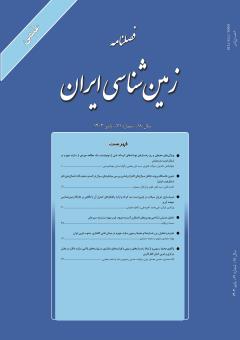شبیهسازی جریان سیلاب در پاییندست سد کرخه و ارایه راهکارهای کنترل آن با نگاهی بر جایگاه زمینشناسی حوضه آبریز
محورهای موضوعی :نورالدین بازگیر 1 , علی محمد آخوندعلی 2 , کاظم حمادی 3
1 - دانشجوی دکتری، گروه هیدرولوژی و منابع آب، دانشکده آب و محیطزیست، دانشگاه شهید چمران اهواز
2 - گروه هیدرولوژی و منابع آب دانشگاه شهید چمران اهواز
3 - مدیریت مطالعات پایه منابع آب سازمان آب و برق خوزستان
کلید واژه: حوضه آبریزکرخه, سیلاب, زمینشناسی, شبیهسازی دوبعدی.,
چکیده مقاله :
حوضه آبریز کرخه با وسعت بیش از 50 هزار کیلومترمربع در غرب کشور واقع است. با این همه وجود سدهای مخزنی بالادست بخصوص سد مخزنی بزرگ کرخه، دشتها و شهرهای پاییندست آن هنوز از مخاطرات سيل در امان نیست. با توجه به جایگاه زمینشناسی حوضه آبریز رود کرخه، در بارشهای شدید بیش از 70 درصد مساحت حوضه آبریز پتانسیل تولید سیلاب دارد. هدف پژوهش جاری شبیهسازی جریان سیلاب توسط مدل یک- دو بعدی و استفاده از کانالهای سیلاب بر و حوضچههای ذخیرهای برای انحراف و ذخیره بخشی از سیلاب بهطوریکه خسارات پاییندست را در حد قابل قبول تقلیل دهد. بهمنظور مدلسازی هیدرولیک جریان در شرایط سیلابی از مدل MIKE FLOOD استفاده شد. این مدل توانایی شبیهسازی جریانهای پیچیده در رودخانه و سیلابدشتها را بهصورت هیدرودینامیکی دارد. دادههای هیدرولوژیکی و هندسی مورد نیاز مدل آمادهسازی شد؛ همچنین دبیهای سیلابی 500 تا 2500 مترمکعب بر ثانیه با تداوم 11 روزه و حجم معادل 475 تا 2376 میلیون مترمکعب طی پنج سناریو بهعنوان مرز بالادست به مدل برای شبیهسازی معرفی شد. نتایج پژوهش نشان داد که از میان گزینههای مورد بررسی، حوضچه و سیلاببر "شاکریه" در تمامی سیلابهای بزرگ رودخانه کرخه فعال است و از نظر حجم نگهداشت 50 درصد از کل حجم ذخیره پیشنهادی کل سامانه را تامین میکند. همچنین این حوضچه در نهایت به تالاب هورالعظیم منتهی میشود و علاوه بر کمک به تامین نیاز زیستمحیطی تالاب، مکان مناسبی برای نگهداشت و ذخیره حجم قابل توجه سیلاب نیز میباشد. این گستره بهعنوان موثرترین (اولویت اول) محل حوضچه تاخیری از نظر حجم ذخیره و مستعد بودن شرایط توپوگرافی تعیین شد.
The Karkheh basin is located in the west of the country with an area over than 50 thousand square kilometers. Despite the presence of upstream reservoir dams, especially the large Karkheh Reservoir Dam, its downstream plains and cities are still not safe from flood hazards. Considering the geological positioning of the Karkheh River basin, during heavy rainfall, over 70% of the basin area has the potential to produce flooding. The aim of the current research is to simulate flood flow using a one- and two-dimensional model and to use flood channels and storage ponds to divert and store part of the flood in a way that reduces downstream damage to an acceptable level. In order to hydraulically model the flow in flood conditions, the MIKE FLOOD model was used. This model has the ability to simulate complex flows in the river and floodplains hydrodynamically. The hydrological and geometric data required for the model were prepared; Also, flood discharges of 500 to 2500 cubic meters per second with a duration of 11 days and a volume equivalent to 475 to 2376 million cubic meters were introduced as the upstream boundary to the model for simulation in 5 scenarios. The results of the study showed that among the options studied, the "Shakariyeh" pond and floodgate are active in all major floods of the Karkheh River and provide 50% of the total proposed storage volume of the entire system in terms of storage volume. Also, this pond ultimately leads to the Hur-e-Azim wetland, which in addition to helping to meet the environmental needs of the wetland, is also a suitable place to store and store a significant volume of floodwater. This area was determined as the most effective (first priority) location for the delay pond in terms of storage volume and susceptibility to topographic conditions.
